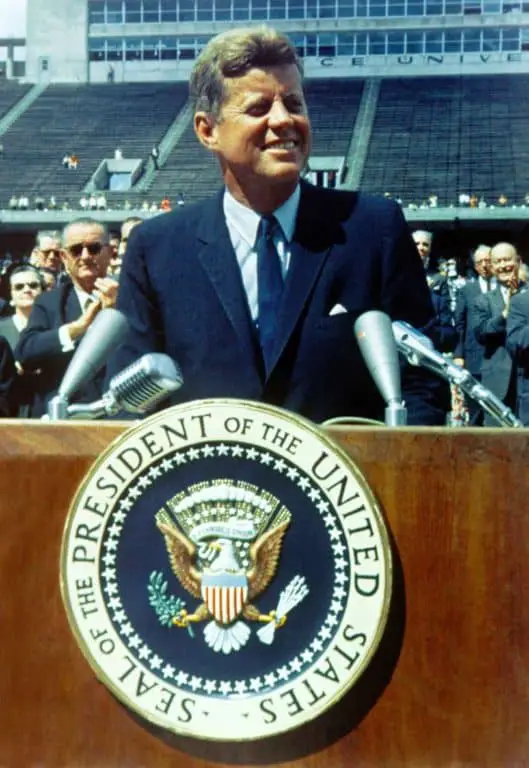7 Elements of Sales Presentations That Convert
Delivering a compelling sales presentation is a lot more than a glowing sales pitch and raving product reviews. Being able to connect with your target audience goes beyond making convincing statements and putting texts together on a slide.
To make a presentation that’ll convert prospects into loyal customers, you will need these seven elements of sales presentations:
- Conducting Thorough Research
- Eye Catching Introduction
- Effective Structure: Simple Slides
- Relatable Storytelling
- Strong Credibility Building
- Value Add and Pitch
- Conclusion (Urgency, Call To Action)
Knowing the basics of how to present your product, services or business is key to ensuring higher conversion and trust from your prospective customers.
Please not that this article is about the elements of the PRESENTATION, this is not about the sales process steps, click in the article below you can learn those steps and polish your sales skills.
Related Article:
7+1 Sales Process Steps that Closes the Deal Every Time
Business Presentation: 21 Insights for Persuasive a Business Speech
With that out of the way, let’s dive into the key components of a Sales Presentation.
7 Basic Elements of Sales Presentations That Convert
1. Research for a Sales Presentation
According to reports, there is a sparse number of sales reps who have a keen understanding of their prospective clients’ problems. Many sales agents just want to get their products sold with little or no empathy for their clients’ aspirations and desires.
To deliver a compelling sales presentation aimed at converting prospects to loyal customers, you need to make convincing statements that are unique to a specific type of audience. How do you achieve this? By doing thorough research.
Essential questions to ask when doing your sales presentation research are:
- Who are my prospects or buyers?
- What is their problem?
- Why has their problem persisted?
- How can my product (or service) solve this problem?
- What would make them not buy our product (or service)?
The moment you’re able to find genuine answers to these plaguing questions, you’ll be able to connect with your buyers on a much deeper level than your competitors. This would give you a higher chance of closing the sale than ever before.
Victor Antonio’s podcast on the elements of a Winning Presentation makes a good job of addressing this point and the basic strategy on crafting and delivering a killing sales presentation.
2. Sales Presentation Introduction
It might interest you to know that your sales presentation can only go as far as your introduction allows — the first impression is everything.
In your sales presentation introduction, there are two major things to keep in mind;
- You’re in fierce competition (with emails, meetings, work, calls, and others) for your audience’s attention.
- What you say in the first few minutes would determine whether you’d be listened to or tuned out.
To guarantee sales presentations that convert, you need to come across to your clients as a friend or as someone who genuinely cares about them.
Understand that you’ll be doing yourself a great disservice by introducing your sales presentation with a flowery description of your product or service. Why? Because the last thing a buyer wants to hear about (especially at the opening of the dialogue) is your product.
Instead, engage the audience by asking questions that are peculiar to them or their company. You could ask them about a recent feat they’ve accomplished or what they think can make their job easier. Ease them into the conversation. And bring down their defenses as you win their trust—all in the first 2 to 3 minutes. That is the only way you’re keeping their highly sought-after attention.
3. Sales Presentation Design Strategy: Simple slides
If you want to maintain your audience’s attention throughout your presentation, you should endeavor to keep it simple.
Nothing kills sales presentations faster than too much information. Every second, the human brain is continuously working hard to interpret loads of information.
When you bombard your clients with a lot of data, you’re exhausting their energy by giving their brains too much work. They will be on a mental marathon, trying to decipher the point you’re trying to make. What this translates to is…you guessed correctly — low sales!
So to avoid this, try to adopt a slide policy of fewer texts, more visuals. Let your slides be engaging and to-the-point. Remember, a sales presentation is a dialogue and should go both ways.
Do not cram — and do not treat your slides as you would a script. Let the words flow through you like a river (this is why adequate preparation is necessary).
Reading through slides like a script reader would make you lose credibility with your audience. Instead, use your slides as a guide for the conversation. Let them be the roadmap, showing you the areas to address.
4. Storytelling in Sales Presentations
Who doesn’t love a good story? Especially one where you are the main character. A great way to keep your audience glued to your presentation is storytelling.
How to tell a compelling sales story:
- Begin with a character that shares the same frustrations and challenges as your prospects.
- Next, show a picture of what’s attainable. That is, paint a scenario of how life would be for that character without those challenges in place.
- Finally, reveal how a supporting character (your product) came along and saved the day.
Here’s why telling a story would help you tremendously in your sales presentation:
- Storytelling appeals to the clients’ emotions, and All major buying decisions are made based on feelings (which are later explained by logic).
- A picture is worth more than a thousand words. Storytelling paints a vivid picture to the prospects about how your product or service would fit into their lives.
- In storytelling, prospects are the heroes, while the product is the supporting cast that’ll lead them to the desired victory.
5. How to Credibility in your Sales Presentations
In many life scenarios, showing is better than telling — and it doesn’t exclude sales. Many sales reps find that closing deals get easier when their brand is well-known and trusted. This is because people want solid proof of a brand’s authenticity before investing in any product.
These are a few ways to win the trust of your prospects.
- Use case studies; Talk about your current customers. Why weren’t they getting their desired result before you came along, and how have you been of help to them?
- Show testimonials; Getting recommendations from satisfied customers is particularly effective because your prospects can see (and hear) about your product or services from someone other than you.
- Back up your claim with valid references; This could be the use of charts, graphs, or figures.
- Give a Money-back guarantee. It reduces the fear of investing and shows confidence in your product or service.
6. Sales Presentations Pitch: Share Added value or benefits
The seemingly little things end up making a huge difference. Sometimes, all you’ll ever need to close the deal is just some added value or benefits. For this, you’d have to do a market survey to know exactly what your customers want and what your competition is offering. Knowing what your business rivals are offering will give a clear insight into what form—and to what extent—your offer will take.
Unexpected or added benefits may include—free shipping, free trial, added accessories, bonus, or great discounts.
7. A powerful and compelling Sales Presentation Conclusion
Right after you’ve highlighted the added benefit you’ll be offering your prospects; you should be getting ready to draw the curtains on your presentation.
As easy as this seems, however, it can be tricky as well. It’s believed that a number of salespeople fail to make sales happen as a result of their poor conclusion. Therefore, for a successful sales presentation, the concluding part should include:
- Urgency
Create a sense of urgency to shorten the time it would take to make the sale. To do this, you could tell them only limited slots are available for the juicy offer, so they should hurry before the offer ends.
Another urgency tactic is offering a 10% or 20% discount to the first 20 customers. You can also give a 48-hour time frame that an offer would last. All these would help in hastening the buyers’ decisions, thereby shortening the sales cycle.
- A call to action
Research has shown that the majority of buyers won’t buy unless you ask them to. So do not make the mistake that most salespeople do by assuming your clients know what you want.
After taking the time to address their problems, highlighted solutions provided proofs for your claims, and offered additional value. You should tell them what to do next, which is to purchase your product or service. Then, make it easy for them to do so.
Several key elements determine the outcome of any sales presentation. Sadly, the majority of sales representatives aren’t aware of them, which is why they come up with weak punch lines and watery sales pitches that are delivered dead on arrival.
Thankfully, you do not have to go through that because now you know how to close those deals and keep those orders coming in like never before.
REFERENCES & FURTHER READING
Hubspot. 6 Essential Elements of a Successful Sales Pitch or Presentation.
AceThePresentation: 7+1 Sales Process Steps that Closes the Deal Every Time
Victor Antonio. www.VictorAntonio.com
SharpSpring. 4 Essential Elements of a Powerful Sales Pitch








